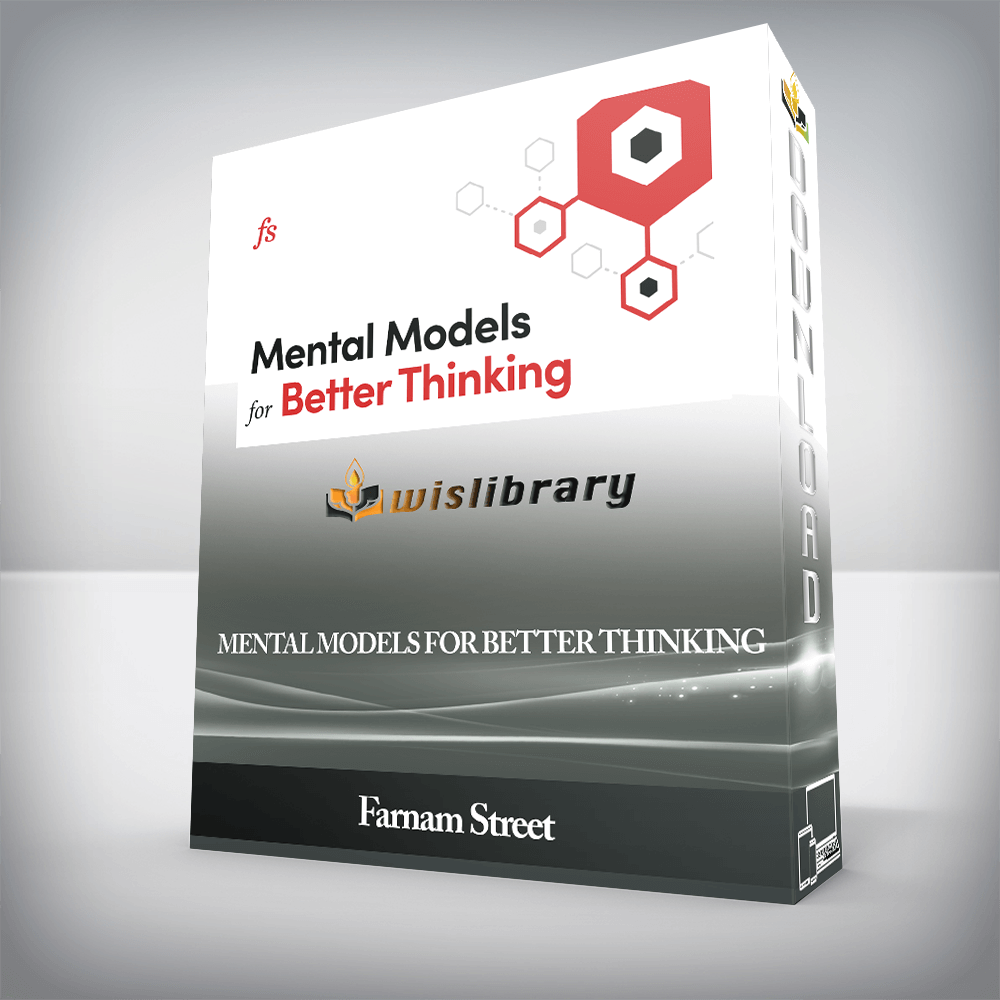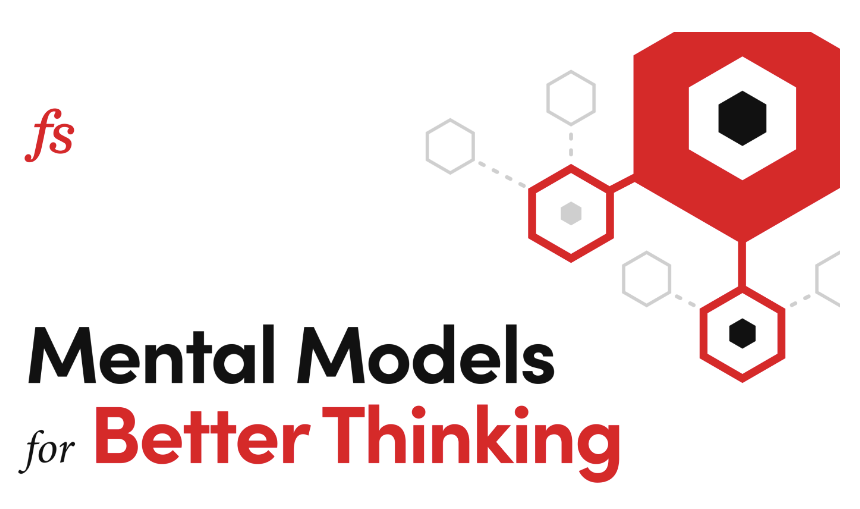

Farnam Street Mental Models for Better Thinking, Learn the 5-step system that takes what you’ve read about mental models and gives you a framework for how to use them in your everyday life.

Learn the 5-step system that takes what you’ve read about mental models and gives you a framework for how to use them in your everyday life.
The way you think determines everything:
Most people try to improve their thinking by consuming more information.
They spend countless hours reading great books, listening to smart podcasts, and watching fascinating videos, only to end up in the same place. They are surrounded by information, but they don’t feel like that information is translating into better thinking and better results.
At the end of the day, they still feel like they’re winging it.
Mentals models are the way you understand a complex world. When you have the right models, and the latticework to use them, they help you simplify that complexity in a way that turns information into true learning and practical action.
But few people end up with the right models by default. Your brain forms these models without you even knowing it — and often creates suboptimal structures for processing all the information you consume on a daily basis.
Fortunately, there’s a solution. You can consciously and deliberately teach yourself to think differently — to develop new mental models that help you process new information, navigate paths of inquiry, and chart courses of action to solve problems and improve your outcomes.

A practical, actionable system for building a latticework of mental models that help you think and learn better every day. We’ve taken years of research, experience, and expertise on mental models, and turned them into a comprehensive course for ambitious thinkers.
This course leads you step by step through every part of building an efficient, personalized latticework of mental models: selecting, distilling, contextualizing, preparing, integrating, applying, reflecting, and improving over time.


Learn how to get out of reactive mode and approach life from the driver’s seat, seeing the big picture, analyzing different angles, and making conscious decisions. Learn how to use your mental latticework to turn the things you learn into practical, day-to-day actions that improve every area of your life.
You’ll get access to 5 modules with over 70 videos, lecture handouts, 15 exercises, and 5 challenges . We’ll show you how to build mental models into your life, making them a part of how you think and work.


We give you both the context and the tools in this comprehensive training. Without a framework for understanding the world, you’ll have a narrower perspective, miss important angles, and frequently find yourself stumped by problems. Without a toolbox of mental models, you’ll be stuck in the same conflicts, deal with the same problems, and experience growing frustration at your lackluster outcomes.
Rhiannon Beaubien, lead author of The Great Mental Models book series, developed Farnam Street’s ReThink Parenting course, teaching parents how to use specific models to improve family life. As a practitioner of mental models, she has yet to come across a situation or challenge that isn’t better navigated with some deliberately constructed models.
Shane Parrish teaches, guides and coaches CEOs wanting to perform at the top of their game. He is the founder of Farnam Street Media, Latticework Publishing, and Syrus Partners. Shane authors Farnam Street’s weekly newsletter Brain Food, delivering timeless insight for better decisions to over 400,000 readers worldwide.
Shane and Rhiannon don’t just write about mental models. They teach them to others and use these same models every day to make decisions, improve relationships, solve problems, and identify opportunities.
It’s possible you’re already familiar with mental models and may have even spent considerable time learning some or looking through lists of them.
Maybe you’ve…
Unfortunately, being aware of mental models and what they are supposed to do isn’t enough. Memorizing models isn’t the same as learning how to use them to make decisions and solve problems.
If you feel stuck in your progress, too busy reacting to think about how you think, there’s a good reason for that… and reading yet more examples of mental models isn’t going to help.

To actually see any benefit, you need to develop your own unique latticework, along with an understanding of how each model connects with the others, when to use each, and why.
Learning to use mental models is not a sequence of memorizations. It’s a comprehensive overhaul of the way you think.
Once you learn a repeatable process for turning time-tested concepts into lenses for viewing the world, plus tools for planning your course of action, you’ll be able to accelerate your path to expertise in any area.
Using mental models will become effortless and intuitive. Facing any situation that calls for clearer thinking, you’ll know exactly which mental model or models to whip out of your toolbox and see what others can’t.
There are no reviews yet.
You must be <a href="https://wislibrary.org/my-account/">logged in</a> to post a review.